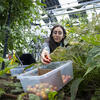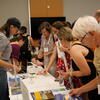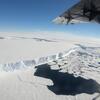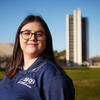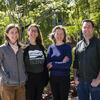Message from the Chair
Greetings from Earth and Environmental Science!
It has been a tremendously productive year for our department. Here are just a few highlights from 2024:
- In summer, EES hosted the Earth Educator Rendezvous of the National Association of Geoscience Teachers at Temple University;
- Leah Wenhold Parente, CST ’17, who earned a bachelor’s in geology, was recognized as one of Temple University’s 30 Under 30 innovators and leaders for her work helping to secure clean drinking water in North Carolina;
- In partnership with the College of Liberal Arts and Department of Biology, EES launched, under the direction of Associate Professor Alexandra Davatzes, a new Professional Science Master’s and graduate certificate in sustainability
- EES students are now immersed in our new, innovative field camp coursework; and
- Faculty and students continue to explore the connection between food, energy and water; the impact of stormwater management in cities; the potential to improve food security with urban gardens; and the dynamics of our climate.
After helping lead the department since 2017, Allison Tumarkin-Deratzian stepped down from her role as vice chair to focus on teaching and research. Allison has been invaluable to the department’s success, tirelessly working to successfully navigate challenges and seize new opportunities. Associate Professor Atsuhiro Muto is the new vice chair, formally recognizing work he has been doing over the past few years to help the department succeed.
Temple connections, especially among EES alumni, are strong. Our annual holiday party is scheduled for the afternoon of Friday, December 6. Please join us in Beury Hall if you are able! If you can’t attend, please send me an update on your life and career. Let’s continue to keep alumni and students connected; if you become aware of jobs suitable for recent EES graduates, send me details so that we can help students launch their careers.
Thank you to those alumni who generously support our department, whether through donations that support activities, field camp or scholarships, or by connecting with students through the Owl to Owl Mentoring Program. Together, we are making a difference in the lives of our students and an impact in our local communities and the global environment.
Cheers,
Nick Davatzes



